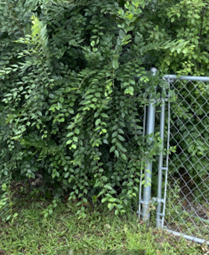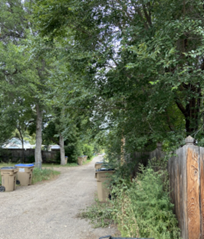
27 Aug Siberian Elm Trees Negative Impacts in Minot
Siberian elms have invasive traits that enable them to spread aggressively. Several traits make Siberian elms (Ulmus pumila) one of the most disliked invasive trees around. They harbor Dutch Elm Disease, dead and dying trees are breeding ground for elm bark beetles that are vectors for the disease which carry it to other trees including our native American Elm. Our native American Elm succumb to the disease usually within two years. The Minot Forestry Department has issued over fifty abatement letters to city residents mandating the removal of infected Elm trees this year alone. Removal of diseased trees slows the spread of the disease throughout our community. Trees on private property must be removed at the owner’s expense often costing thousands of dollars. The Siberian elm also clogs up our alley ways and fence lines often growing intertwined in chain link fences.
The tree spreads by the often overabundance of seeds it produces which grow wherever they touch bare soil. Control is often more effective when trees are saplings. Saplings can be pulled or dug up, but larger trees will require cutting down and treating the stump with glyphosate or triclopyr, this procedure is often called the cut and stump method of control. Treating with herbicide of the cambium layer (outside ring of sump) after cutting will kill the stump and prevent suckering. Minot Forestry encourages to “Pull ‘em when you see ‘em. You will be sorry if you don’t.” approach.
Siberian elms with flagging of DED should have flagging branches removed. Dead or dying elms are breeding grounds for elm bark beetles and should be removed ASAP.
For more information you can contact the Minot Forestry Department at 857-4178.

Fence line intertwined with Siberian elm

Siberian Elm with DED flagging

Siberian elm blocking alley in Minot
For more information on the Emerald ash borer dectection, please refer to North Dakota Department of Agriculture


